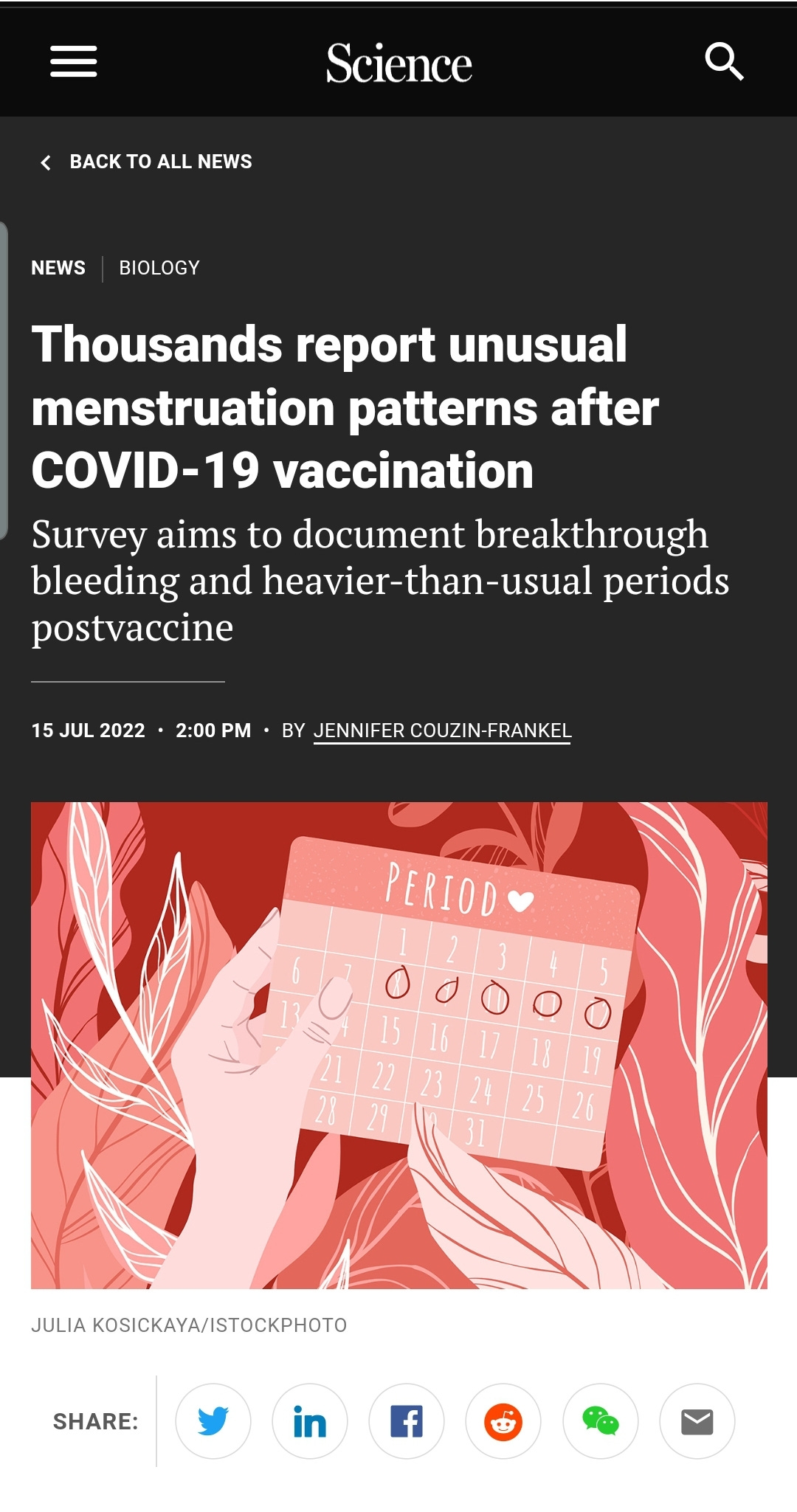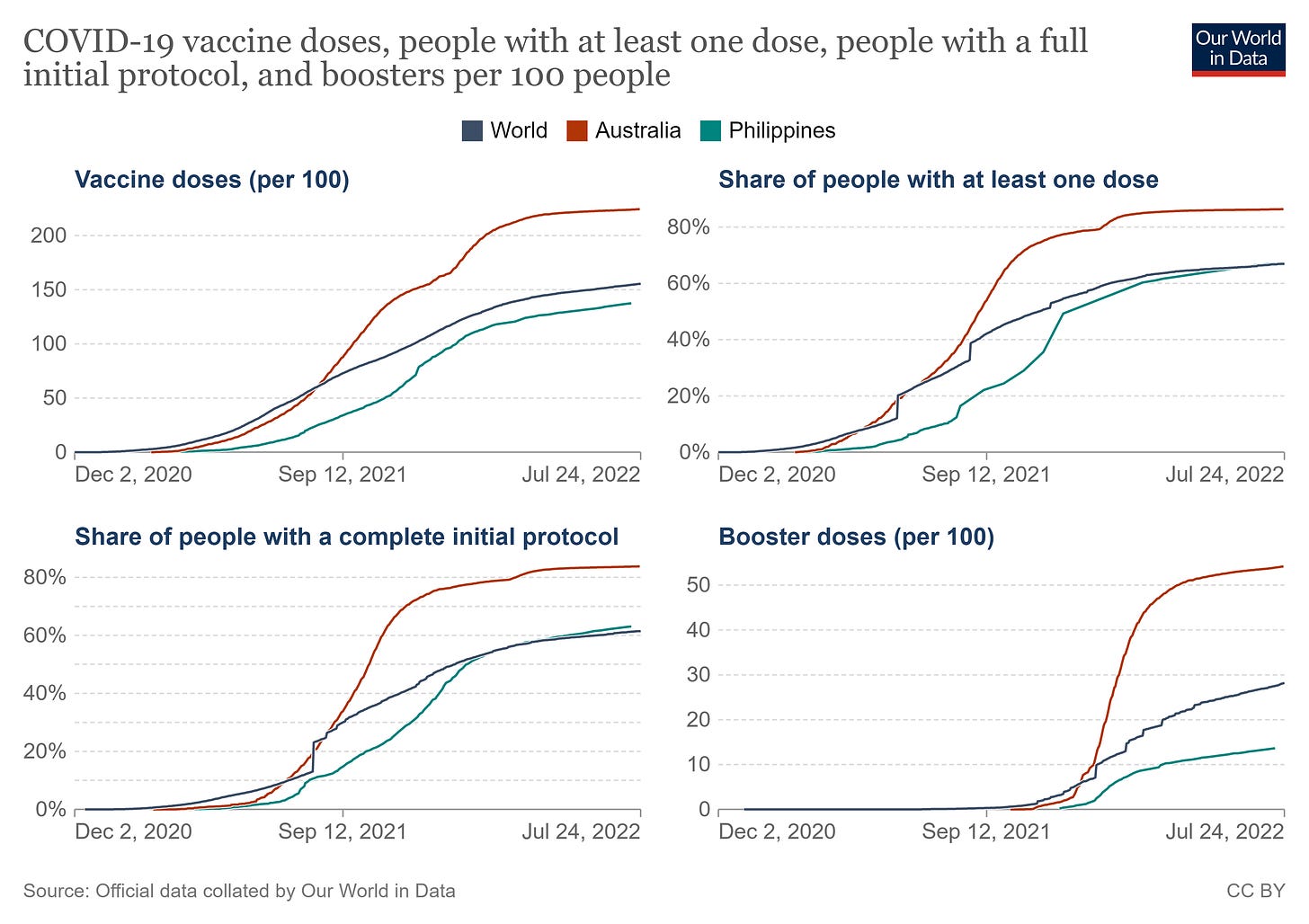Silencing the messenger won’t make the message go away. It will mean we aren’t roused to action until it is very late! Philippines birth rates were already plummeting; a similar drop = depopulation!
A recent paper just published in Science and reported here, original preprint paper here,

indicates that 42% of women experience irregular menstruation following receipt of covid-19 vaccines. The Magnitude of difference increases with number of doses. Bleeding was also seen in pre-adolescent children, post-menopausal women, and women on hormonal therapy for gender reassignment (this is not menstruation, this is break-through bleeding). They state at the end of the article that the vaccines don’t impact fertility.

Or do they! Conventional wisdom holds that menstrual health and regular menses are key barometers of female health, and vital reflections of hormonal health and fertility. Logically, any changes must surely have reproductive and health implications, in at least some recipients.
I saw this posted in telegram relating to a Brisbane, Australia Fertility doctor from just the past weekend.

I haven’t contacted Dr. McLindon to confirm the story, however, the link to his contact page at the Mater hospital has been disabled, and so I infer that it well may be accurate.

AHPRA, the Australian Health Professional Regulatory Agency, does not permit practitioners to share any information that is not from “authoritative sources”, has provided comprehensive guidelines for covid-19, and a position statement on vaccination which states clearly that there is no place for anti-vaccination messages in professional health practice. Penalty for non-compliance with the Government position can be regulatory actions or deregistration. McLindon has not complied, and his seniority has made no difference!!
Dr. McLindon is quoted as having said that he is seeing pregnancy losses in up to 74% of the vaccinated women in his practice. This is 4.6 to 14.8 times higher than typical normal rates of loss which range from 5 to 16% (58 – 69% above typical losses). We must also note that he sees women who have managed to get and stay pregnant long enough to see a doctor. His data does not reflect failure to get pregnant or very early losses.
I showed this same post to a local Manila based obe-gyn, friend. Her response was:
“Yes, it’s happening in countries with high vaccination rates. It’ll happen to us soon! And I’m seeing it in my practice; so many pregnancy failures!”
She has been collecting data within her practice but has not yet compiled and analyzed that data. She also mentioned that she has recently seen far more cervical cancer cases in apparently low risks women recently than ever before. I asked if anyone is talking about these cases in her profession. She said that many of her colleagues still do not countenance that any of the women’s health issues could be related to the vaccines rolled out last year. Anyone who dares to suggest so becomes a pariah! Relating to the pregnancy losses, she also does not know of any of any autopsies or investigations to determine the cause of the increasing deaths of in utero babies being conducted.
In local FB groups that I am part of, women are beginning to discuss menstrual irregularities as being normal post vaccine. They are discussing their failure to fall pregnant, despite trying. They are increasingly discussing vaccine outcomes. Whenever anyone asks a question about any health issue, the first question asked is “are you vaccinated?”, “with what?”, “how many doses?”. The first response to address the issue is typically “don’t take any more vaccines!”.
How large will the coming baby bust be? I have previously written about the Philippines plummeting birth rates from 2019 to 2021; likely mostly unrelated to covid-19. Useful data for 2022 isn’t released yet.
The impacts of the 2021 covid-19 vaccination campaign, if any, on live birth rates should become apparent from early in 2022, but particularly by April to July (no population statistics data released for this period), 10 months after the mass 3rd quarter 2021 rollout to the general population.
If live births in the Philippines were to drop further, to the degree discussed by Dr. McLindon (58 to 69% drop), we may see the 2019 normal level of 4,586 registered live births/day drop even further from the 8.9% loss seen in 2020 (average births of 4,177/day), from the 21.8% loss seen in 2021 (average births of 3,588/day), to add a further loss of 67 – 76% (remaining average births of 1,100-1,500/day, loss referred to 2019 rates). That is without consideration of women who have simply failed to get pregnant.
The possible drop to 1,100 to 1,500 births a day (or worse) would be well below the 2020 and prior normal death rates of 1,700 a day. And far below the 2021 preliminary death rates of just over 2,300 a day. If this happened, it would be a mass depopulation / population contraction event.
The Philippines hasn’t vaccinated as many % of the population as Australia has and perhaps local outcomes won’t be as grave.

We won’t know if there is reason for concern until the population data for 2022 is released. Timely release of PSA data on vital statistics could already reveal if my concerns are as misplaced as I hope they are, and guide direction for this beloved country!
Source – https://supersally.substack.com/p/fertility-issues-senior-australian
